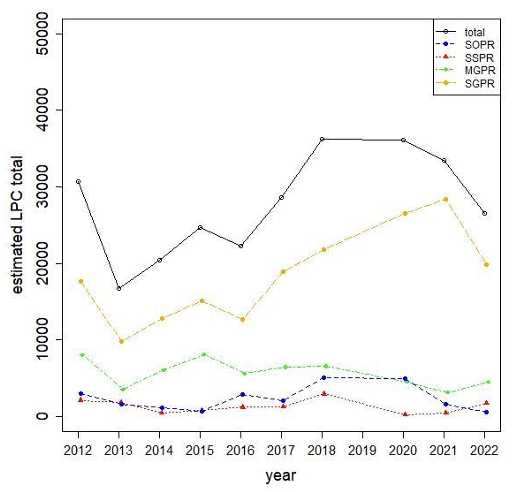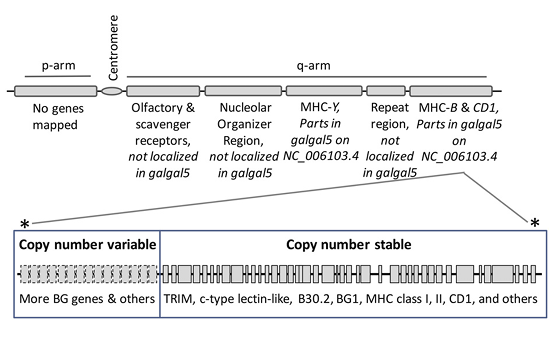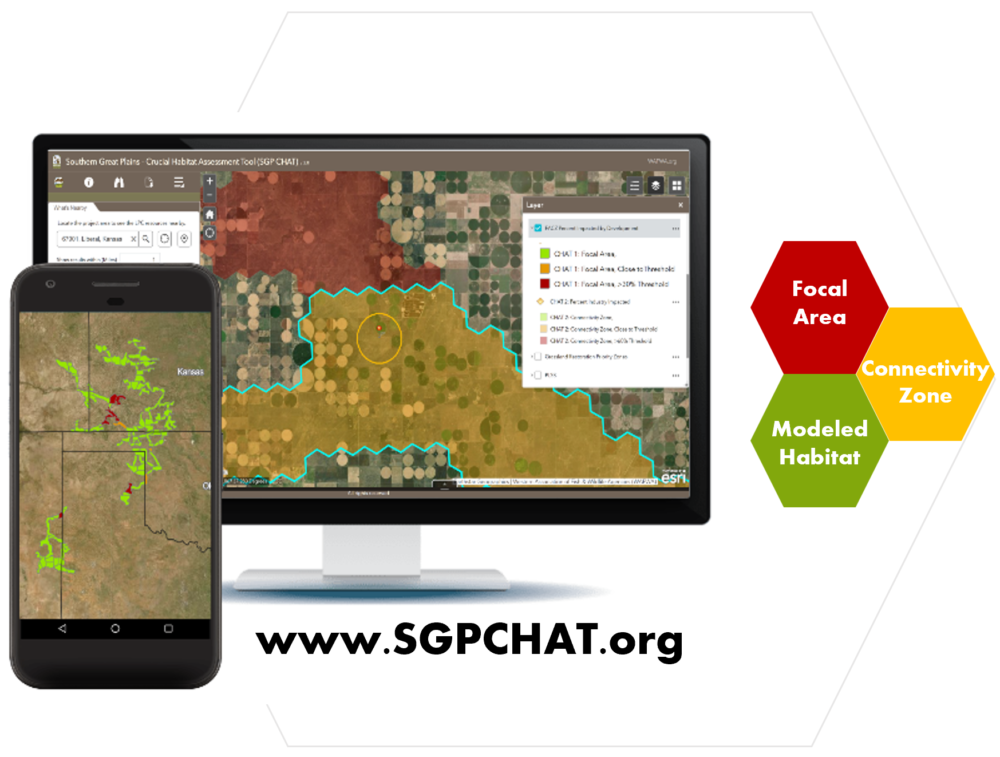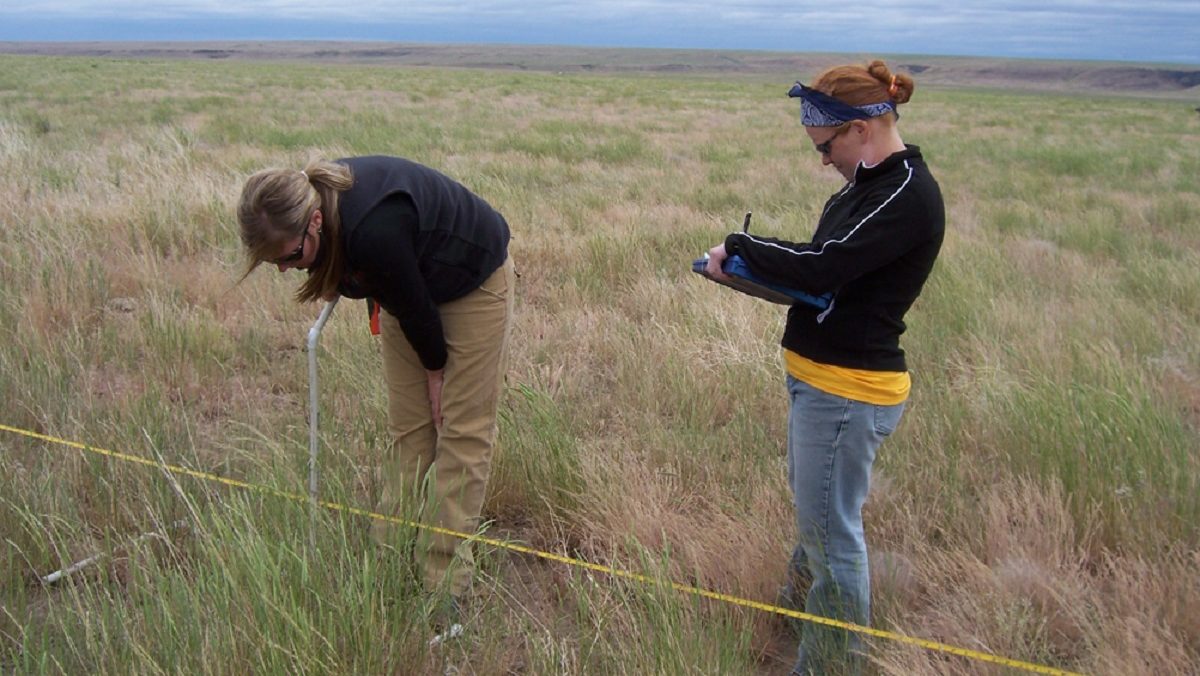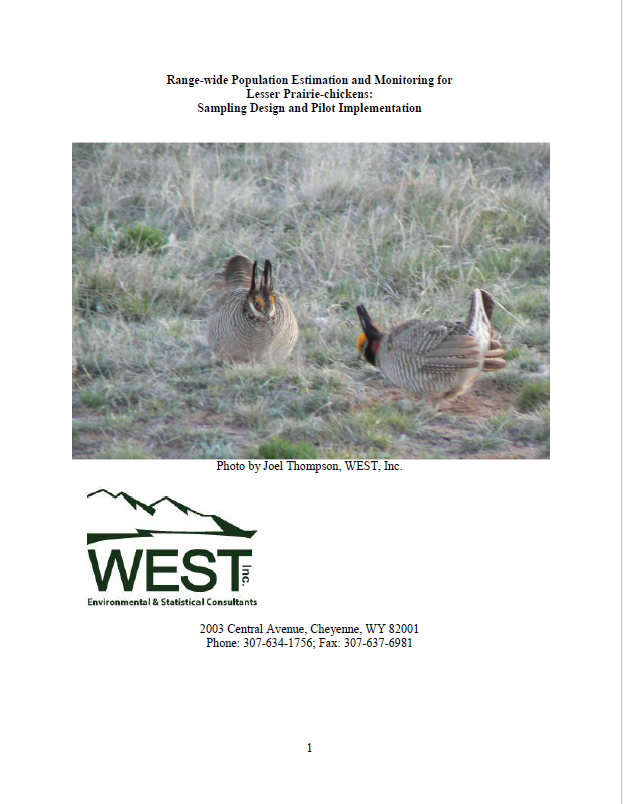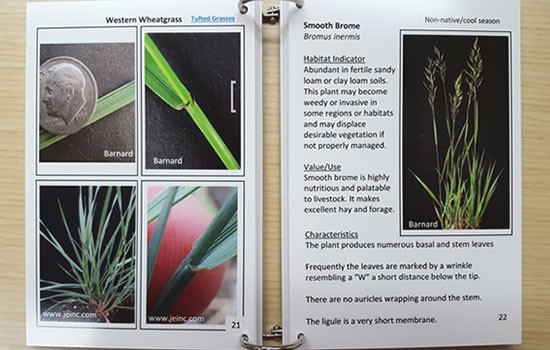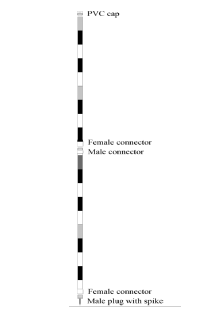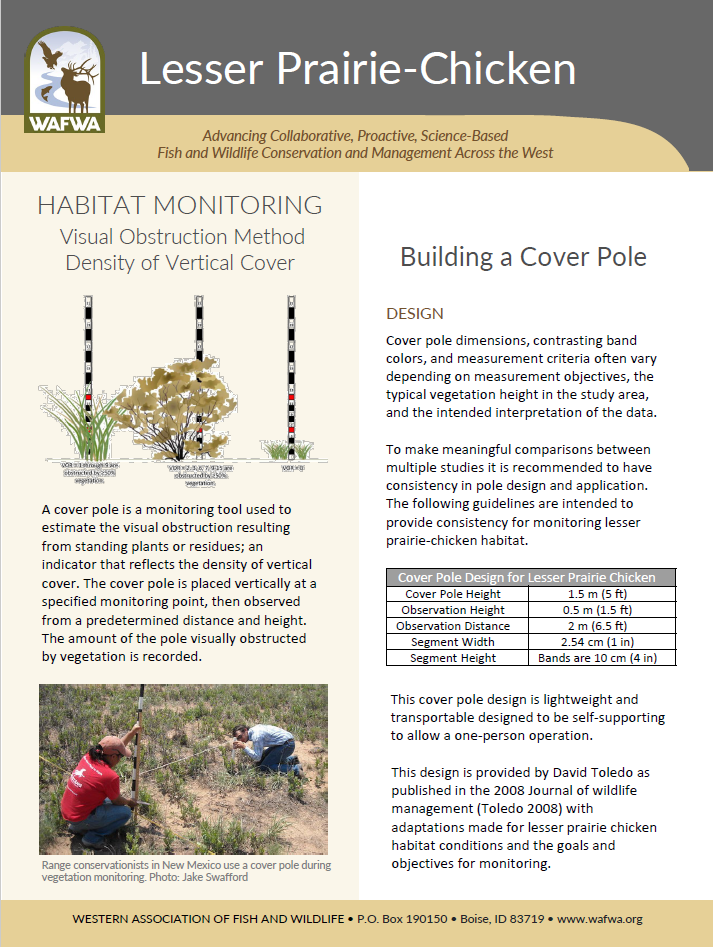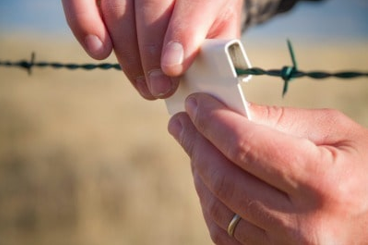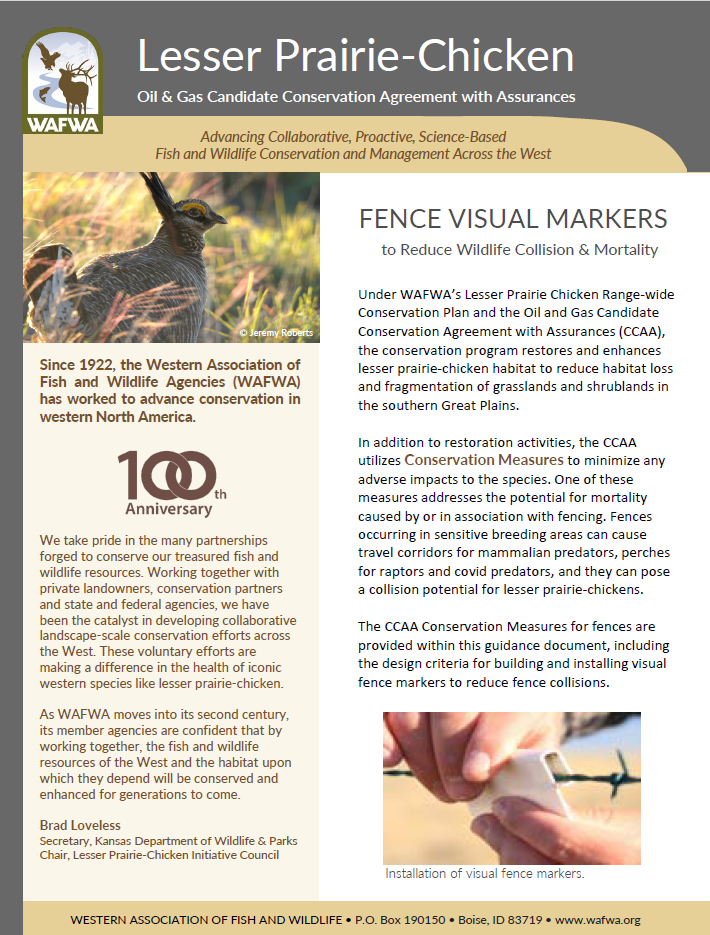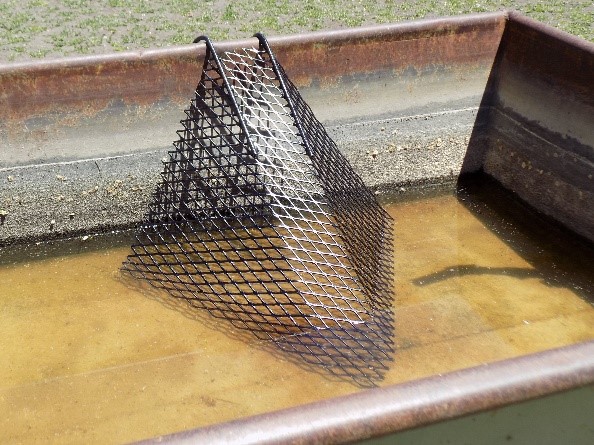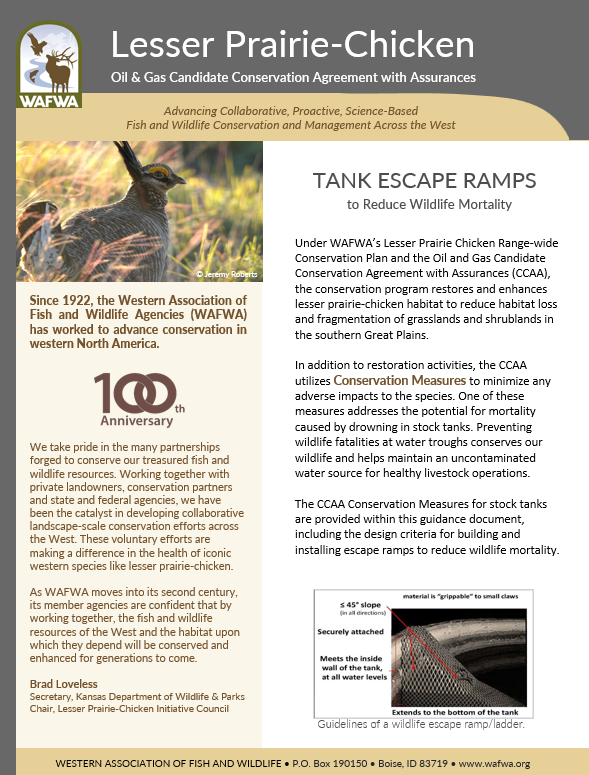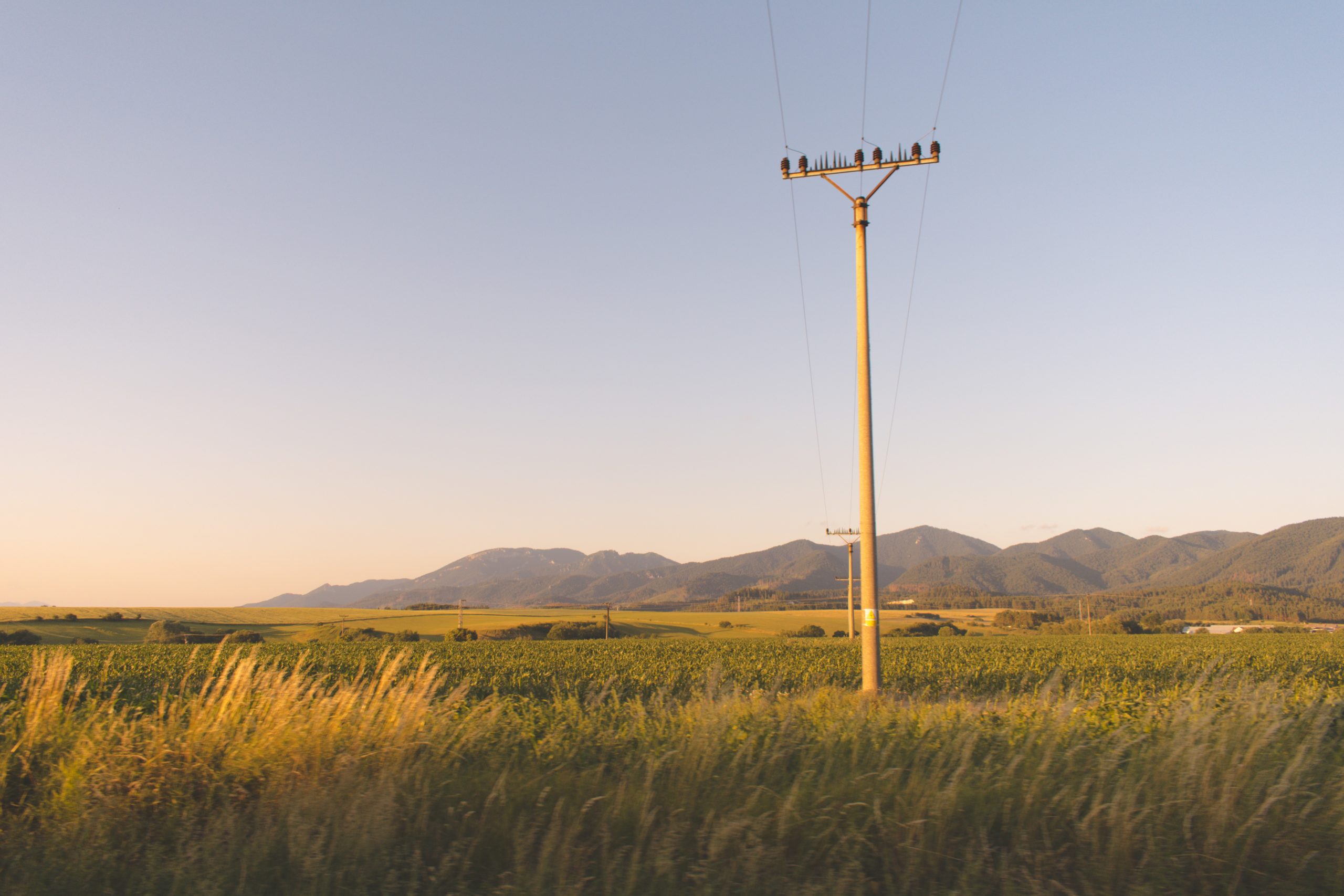Lesser Prairie-Chicken
Two-pronged strategy for conservation
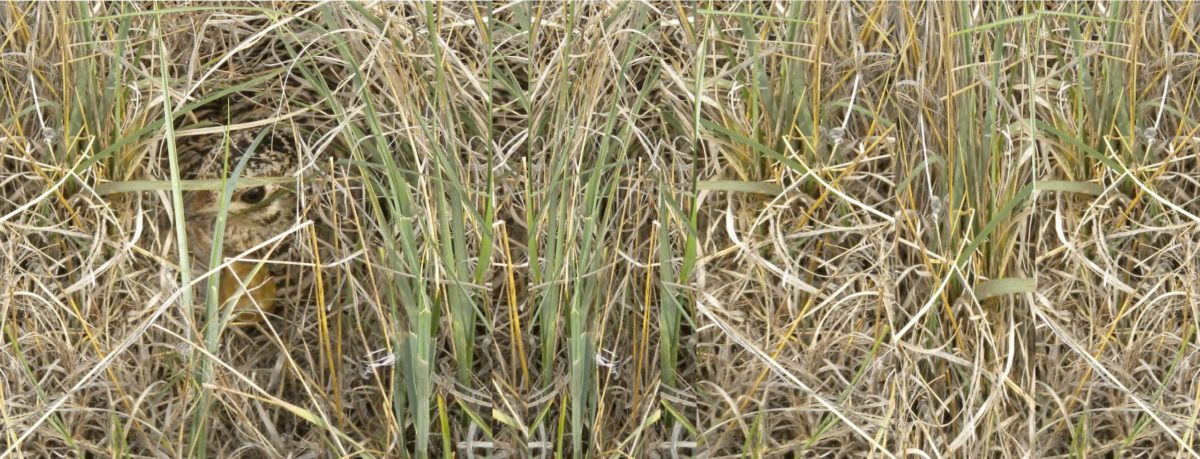
The Lesser Prairie-Chicken Range-wide Conservation Plan
WAFWA in partnership with New Mexico, Colorado, Kansas, Oklahoma and Texas
Range-wide
CONSERVATION
The range-wide plan brings together the various programs and efforts working toward conservation of lesser prairie-chicken and its habitats, to provide a common and unified partnership approach. The plan emphasizes shared resources such as conservation planning tools and encourages private landowners and others to partner with agencies and organizations in their conservation efforts.
EXPLORE – Shared Conservation Resources & Tools
Range-wide
MITIGATION
The Range-Wide Oil & Gas Candidate Conservation Agreement with Assurances for the Lesser Prairie-Chicken (CCAA) is a voluntary conservation strategy administered by WAFWA and permitted by the U.S. Fish and Wildlife Service (USFWS). The CCAA provides incentives for enrolled oil & gas industry participants to avoid, minimize and mitigate impacts to the lesser prairie-chicken while providing regulatory assurances regarding the effect, if any, that an ESA listing would have on their operations.
AVOIDANCE
The CCAA incentivizes the location of new oil and gas developments within areas already impacted by infrastructure.
MINIMIZATION
When avoidance is not possible, the CCAA incentivizes the location of new oil & gas developments outside of high-quality habitat.
MITIGATION
When industry activities occur to LPC habitat which cannot be fully addressed through avoidance, the CCAA employs a 2:1 mitigation ratio.
EXPLORE – Shared Mitigation Resources & Tools
Conservation Benefit
The CCAA conservation strategy provides benefits to the species well beyond the program’s USFWS permit requirements. This is realized primarily through industry’s voluntary conservation actions, such as implement of voluntary conservation measures, promoting remediation, providing lek survey information, supporting WAFWA’s conservation efforts beyond whats required by the permit, and by providing the necessary resources to advance some of the best science available.
Learn More
Contact Us
Chanda Pettie
Lesser Prairie-Chicken Program Director
Western Association of Fish & Wildlife Agencies
chanda.pettie@wafwa.org
Jeff Davis
LPC Initiative Council Chair
Director of Colorado Parks & Wildlife
jeffrey.davis@state.co.us
Support Incentive-based
Voluntary Conservation
Promote Shared
Approaches, Resources & Tools
Encourage Impact
Avoidance & Minimization
| Document Name | Last Updated | File Size | Download | |
|---|---|---|---|---|
| 2013. Lesser Prairie Chicken Range-Wide Conservation Plan | 2/28/2023 | 7.37 mb | Download | |
| 2014. CCAA Permit No. TE27289B-0 | 9/05/2023 | 1.88 mb | Download | |
| 6/30/2025 | 0 kb | Download |


